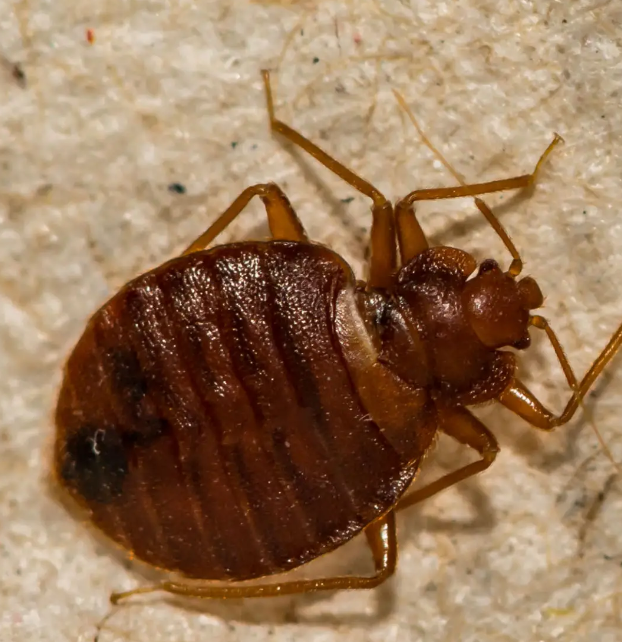Due to the advancement of travel and trade combined with negligent disposal of appliances, bedbugs are the small, blood-sucking insects that flourish in our homes, causing discomfort and disturbance.
The unassuming insects struggle to access our homes and can be readily brought in through our luggage, clothes, or even on our pets. Upon getting inside, they regenerate themselves, thus giving people unpleasant, annoying, and even allergic symptoms sometimes. This article will explain the way of noticing, preventing and treating bed bugs carefully and thoroughly.
Identifying Bed Bugs
Before you start on treating bed bug infestation you should be able to identify them for appropriately. Full-grown bed bugs are reddish-brown, oval-shaped insects of seed-size. They have no wings and they are mostly active at night, in search of their hosts’ blood, which they usually attack when they sleep.
The signs of a bed bug infestation may include:
- Visible Bugs: While bed bugs are skilled at hiding in cracks and crevices during the day, you may still spot them in the seams of mattresses, bed frames, or other furniture, especially during the night.
- Bites: Bed bug bites often appear in a cluster or a line on exposed skin and may cause itching and redness. However, it’s important to note that not everyone reacts to bed bug bites, so the absence of bites does not necessarily mean the absence of bed bugs.
- Tiny Blood Stains: After feeding, bed bugs may leave behind tiny blood stains on sheets, pillowcases, or mattresses.
- Fecal Matter: Bed bugs also leave behind dark, rust-colored fecal stains on bedding, furniture, or walls, resembling small black dots.
- Musty Odor: In severe infestations, bed bugs may emit a musty or sweet odor.
Preventing Bed Bug Infestations
The most effective line of defense is prevention; once bed bugs get a foothold in your home you may have a very hard time eliminating the infestation.
Inspect Secondhand Furniture: While checking every piece of used furniture that is about to join your home, look out for any bed bug signs. Give the utmost heed to all the places where bugs like to hide, such as seams, cracks, and gaps.
Be Cautious When Traveling: One must be careful with all their clothing and luggage while staying at hotels or similar accommodations because bed bugs may be hiding inside them Take a look at the bed, headboard, and furniture for indications of bed bugs. Make sure that the area is bed bug-free before you start to unpack.
Encase Mattresses and Box Springs: Put special bed bug- proof covers on all mattresses and box springs which would significantly reduce the chance of bedbugs claiming these places as their own.
Declutter Your Home: Get rid of unnecessary items in your house, as those provide shelter for bed bugs. Vacuum frequently the carpets, rugs, and upholstery areas in homes to remove any crevices or hiding places.
Seal Cracks and Crevices: Seal entryways such as skirting boards, switches, and water pipes to prevent bed bugs from intruding the building.
Be Mindful of Shared Spaces: If you have an apartment or a dorm, be mindful about shared areas like laundry rooms or common areas, where they can easily spread from one unit to another.
Treating Bed Bug Infestations
If you suspect you have a bed bug infestation despite your best prevention efforts, prompt action is essential to prevent the problem from worsening. While treating bed bugs can be challenging, it’s not impossible. Here are steps you can take to eradicate bed bugs from your home:
- Thorough Cleaning: Begin by thoroughly cleaning and decluttering infested areas. Remove bedding, clothing, and other items from infested rooms and wash them in hot water followed by a high-heat drying cycle. Use a stiff brush to scrub mattress seams, crevices, and other hiding spots.
- Vacuuming: Vacuum all surfaces, including mattresses, box springs, furniture, and carpets, paying close attention to seams and cracks where bed bugs may hide. Dispose of the vacuum bag immediately after use in an outdoor trash receptacle.
- Steam Treatment: Steam treatment can effectively kill bed bugs and their eggs on contact. Use a steam cleaner to treat mattresses, furniture, and other infested areas, making sure to reach temperatures of at least 130°F (54°C).
- Chemical Treatments: In severe infestations, you may need to use chemical treatments to eradicate bed bugs. However, it’s essential to use pesticides labeled specifically for bed bugs and follow the manufacturer’s instructions carefully. Consider hiring a professional pest control company with experience in bed bug extermination for best results.
- Monitor and Repeat: Even after treatment, continue to monitor for signs of bed bugs and repeat cleaning and treatment as necessary. Bed bug eggs can be resilient, so multiple treatments may be required to completely eliminate the infestation.
- Prevent Reinfestation: Once you’ve successfully eradicated bed bugs from your home, take steps to prevent reinfestation by implementing the prevention measures mentioned earlier and remaining vigilant for any signs of bed bugs.
In conclusion, bed bugs are a persistent nuisance that can disrupt your sleep and peace of mind. However, with proper identification, prevention, and treatment methods, you can effectively manage and eradicate bed bug infestations in your home.
Remember to act quickly at the first sign of a problem and consider seeking professional assistance if needed. By taking proactive measures, you can protect yourself and your home from these unwanted invaders.


